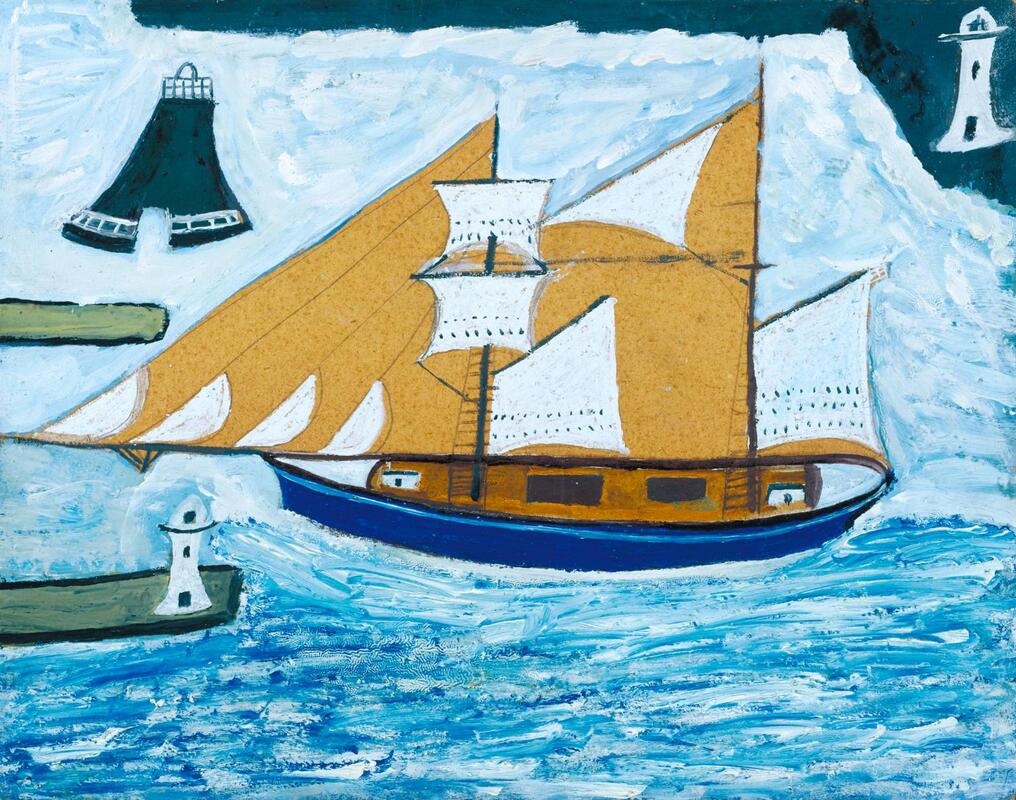|
All authors draw on a wide range of inspirations when creating their stories, such as real-life experiences, places they have visited, concerns about the world and society, books they have read. For me, visual art has always inspired and influenced my writing. I cannot claim to be an expert in art history, and as much as I enjoy sketching my artistic skills are limited at best, but I find it an endlessly absorbing subject and a way of finding different perspectives on the world. By offering us a safe space to consider and explore feelings and fears we otherwise feel uncomfortable in confronting, art can help us all feel a little less alone in this world.
In this blog series, I am going to focus on four artists who have been particularly important to me and my creative work: Ian Miller, Elisabeth Frink, Paul Nash and Alfred Wallis. In this post, I am going to discuss the work of painter Alfred Wallis. One of the most inspiring and original British artists of the 20th century, Alfred Wallis (1855 - 1942) produced deeply personal art, painting images of ships, boats, Cornish villages and a constantly changing sea. With no formal art training, Wallis took up painting after his wife’s death – with little spare money, he mostly painted on found pieces of cardboard. A former fisherman and marine supplies merchant in Cornwall, Wallis painted from memory, drawing on his sea-faring experiences, capturing a disappearing way of life: “What I do mostly is
His limited palette and distorted perspective give his work a distinctive look. Wallis played with size and scale of objects in his paintings, and although the paint is roughly applied, he often achieved high levels of detail. His untrained, naïve style influenced artists such as Ben Nicholson and Christopher Wood, and while he made little money from his works and died in the Madron poorhouse, his paintings helped pave the way to St Ives becoming an important centre in the development of modern art.
Art is absolutely central to Second Sun, the SF book I am currently writing, especially the concept of ‘Outsider’ or ‘Naive’ Art. I find drama in Wallis’s work; his instinctive compositions give his paintings true vitality. His paintings are direct and active – you can almost taste the briny air, hear the waves booming. Wallis had an emotional, almost mystical connection with the sea, ships and the Cornish coast.
I love the sense of an artist expressing a deeply personal, unorthodox view of the world. The work of Alfred Wallis, and discovering more about his life, unlocked for me the character of ‘The Captain’ in Second Sun, who although is definitely not meant to represent Wallis himself, does share many of the same motivations and obsessions. It is important not to romanticise Alfred Wallis – despite the high regard with which he is now held as an artist he struggled with poverty and, it would appear, mental health difficulties – but he brought something profound and original into the world. I like to think that when he was painting, Wallis was soothed in body and mind as he drew on his memories to sail once more on those broiling seas, and capture the essence of a world otherwise lost. And I like to think of how the paintings created by a quiet, solitary man from a little Cornish fishing town reached out and influenced countless others across the art world and beyond.
If you’re interested in my writing, you can get the ebook version of my first novel - The Map of the Known World – for FREE. Please see the following Kindle preview:
1 Comment
|
Archives
October 2023
Categories
All
|



 RSS Feed
RSS Feed